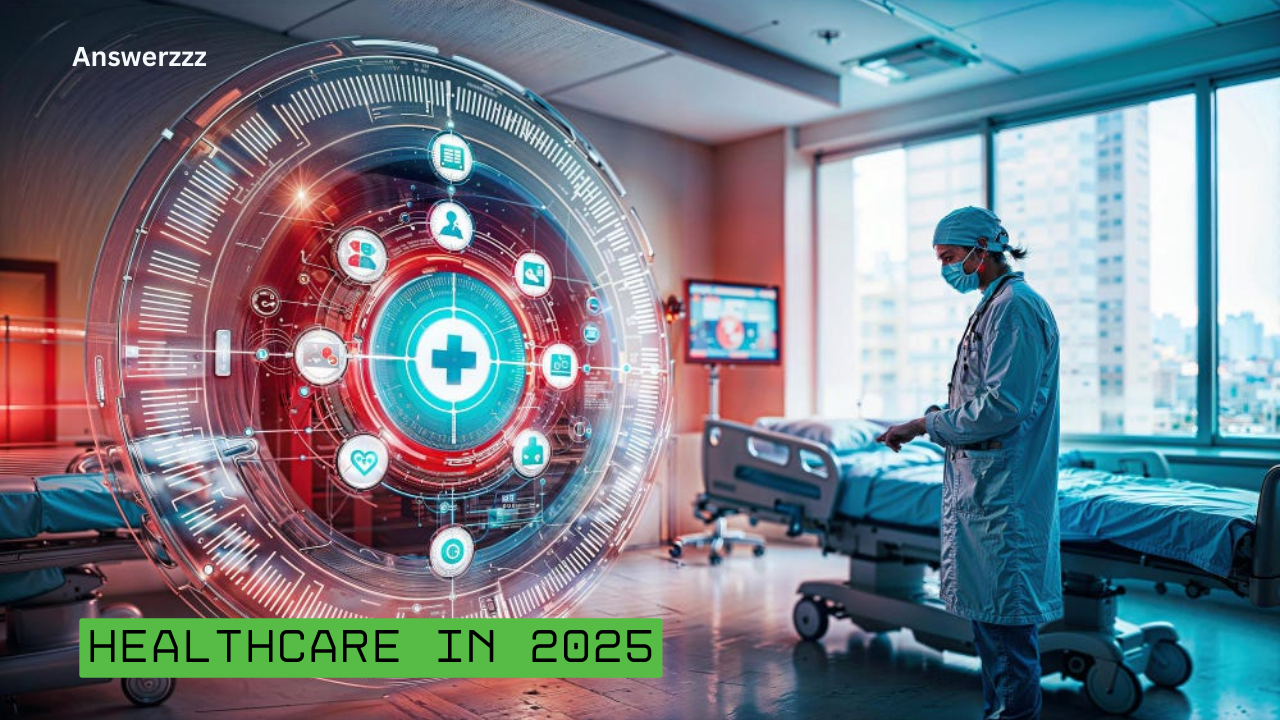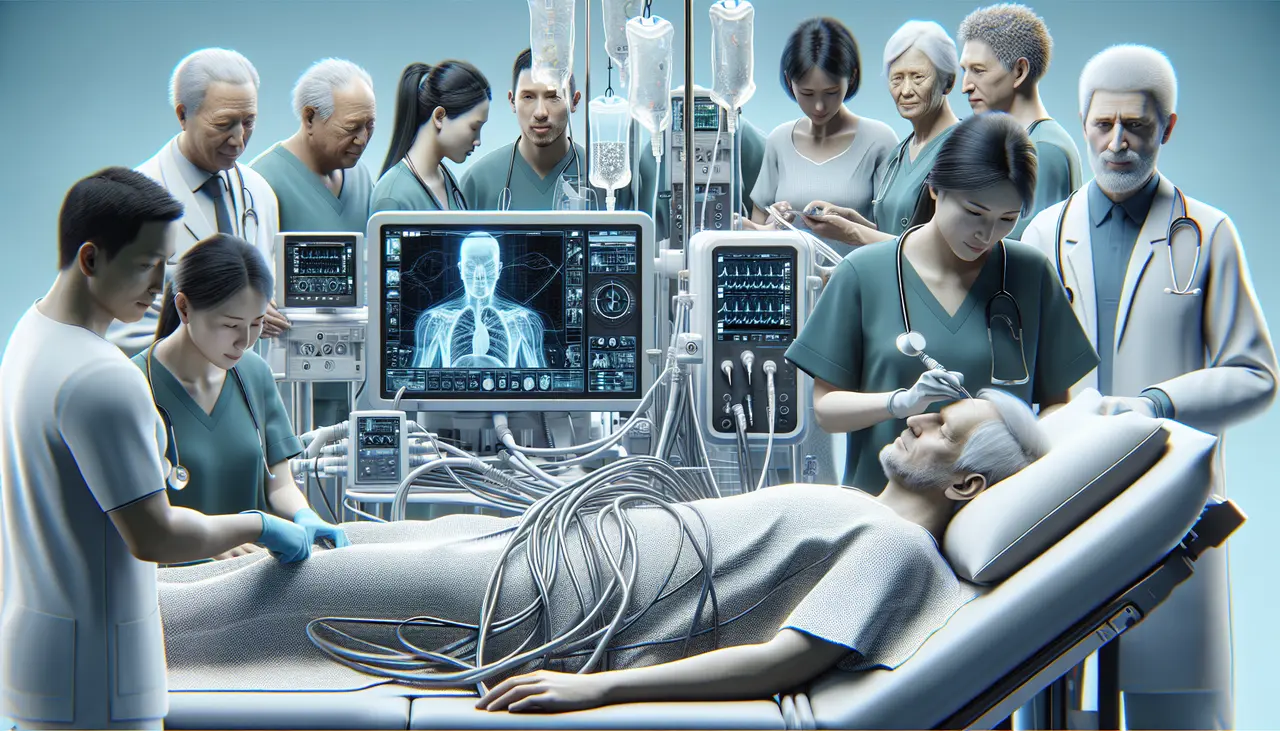The healthcare landscape is evolving at a remarkable pace, driven by advancements in technology that promise to revolutionize patient care. As we approach 2025, three key technologies—Artificial Intelligence (AI), Virtual Reality (VR), and Robotics—are set to play pivotal roles in shaping the future of healthcare. This article explores how these technologies will enhance patient care, improve health outcomes, and transform the overall healthcare experience.
The Current State of Healthcare
Before delving into the future, it’s essential to understand the current state of healthcare. As of now, the healthcare system faces numerous challenges, including rising costs, inefficiencies, and access disparities. Healthcare professionals often deal with overwhelming amounts of data, leading to burnout and reduced patient interaction time. Patients frequently encounter delays in receiving diagnoses, treatments, and follow-ups.
Despite these challenges, technological advancements have already begun to address some of these issues. For example, telemedicine has improved access to care, especially for rural populations, while electronic health records (EHRs) have streamlined data management. However, there is still much work to be done. In the next few years, we can expect AI, VR, and robotics to play a central role in further enhancing patient care.
AI in Healthcare: A Game Changer
1. Data Management and Analysis
AI is transforming the way healthcare providers manage and analyze data. With the explosion of health data generated from EHRs, wearables, and genomics, the need for efficient data processing has never been greater. AI algorithms can analyze vast amounts of data quickly, identifying patterns and trends that may not be visible to human practitioners. This capability allows for more accurate diagnoses and personalized treatment plans.
For instance, AI-driven analytics can help identify at-risk patients based on their medical histories, lifestyle choices, and genetic predispositions. By recognizing these risks early, healthcare providers can implement preventive measures, ultimately improving patient outcomes.
How Blockchain Will Transform Industries Beyond Cryptocurrency
2. Diagnostic Assistance
AI is also playing a significant role in diagnostic assistance. Machine learning algorithms can analyze medical images, such as X-rays, MRIs, and CT scans, with remarkable accuracy. In some cases, AI systems have demonstrated the ability to detect conditions like tumours or fractures more reliably than human radiologists. This not only speeds up the diagnostic process but also reduces the likelihood of human error.
In 2025, we can expect AI to be an integral part of the diagnostic process, supporting healthcare professionals by providing real-time analysis and recommendations. This collaborative approach can lead to faster and more accurate diagnoses, allowing for timely intervention.
3. Personalized Medicine
AI’s ability to analyze data extends to the realm of personalized medicine. By evaluating a patient’s genetic makeup, lifestyle, and preferences, AI can assist healthcare providers in developing tailored treatment plans. This approach not only enhances treatment efficacy but also improves patient satisfaction by involving them in their care decisions.
Furthermore, AI can analyze data from clinical trials to identify the most effective treatment options for specific patient populations. This shift towards personalized medicine represents a significant advancement in healthcare, ensuring that patients receive the most suitable interventions for their unique circumstances.
4. Virtual Health Assistants
AI-powered virtual health assistants are becoming increasingly common in patient care. These digital assistants can provide patients with information, reminders for medication, and answers to common health queries. In 2025, we can expect these virtual assistants to be more sophisticated, utilizing natural language processing (NLP) to engage in meaningful conversations with patients.
By providing support outside of traditional healthcare settings, virtual health assistants can help patients manage chronic conditions, adhere to treatment plans, and maintain open communication with their healthcare providers.
The Transformative Power of Virtual Reality (VR)
1. Immersive Training for Healthcare Professionals
The Rise of 5G and Its Impact on Connectivity and IoT in 2025
Virtual reality is poised to revolutionize the training and education of healthcare professionals. In 2025, medical students and professionals can expect to engage in immersive simulations that mimic real-life scenarios. These VR training programs allow users to practice procedures and decision-making in a risk-free environment, enhancing their skills and confidence.
For example, VR simulations can recreate surgical procedures, enabling trainees to practice techniques and learn from their mistakes without putting actual patients at risk. This innovative approach to training can lead to better-prepared healthcare professionals and improved patient care.
2. Pain Management and Rehabilitation
VR is also proving to be a valuable tool in pain management and rehabilitation. Studies have shown that immersive VR experiences can distract patients from pain during medical procedures and post-operative recovery. In 2025, we can expect VR to be routinely integrated into treatment plans, offering patients a non-pharmacological option for pain relief.
Additionally, VR rehabilitation programs can provide engaging and motivating exercises for patients recovering from injuries or surgeries. By using gamified approaches, VR can encourage patients to participate actively in their recovery, leading to better outcomes.
3. Enhancing Patient Education and Engagement
Virtual reality has the potential to transform patient education and engagement. In 2025, healthcare providers may use VR to help patients understand their diagnoses and treatment options more effectively. For instance, a patient diagnosed with a complex condition could explore a virtual model of their body, gaining a deeper understanding of their illness and the proposed treatment.
By immersing patients in their care process, VR can improve comprehension and adherence to treatment plans, ultimately leading to better health outcomes.
Robotics: Enhancing Efficiency and Precision
1. Surgical Robotics
Robotic-assisted surgeries have already begun to reshape surgical procedures, and by 2025, we can expect these technologies to be even more advanced. Surgical robots provide enhanced precision, flexibility, and control, allowing surgeons to perform complex procedures with minimal invasiveness. This can lead to shorter recovery times and reduced complications for patients.
In addition, AI-driven robotics can assist surgeons by providing real-time feedback during procedures, helping to improve outcomes and reduce errors.
2. Robotic Care Assistants
Robotics is also making strides in patient care beyond the operating room. Robotic care assistants are being developed to support healthcare professionals and improve patient experiences. These robots can perform tasks such as medication delivery, monitoring vital signs, and assisting patients with mobility.
In 2025, we may see robotic assistants deployed in hospitals and nursing homes, allowing healthcare providers to focus on more complex tasks while ensuring that patients receive consistent care and attention.
3. Rehabilitation Robotics
Rehabilitation robotics is another area where technology is making significant advancements. Robotic exoskeletons and rehabilitation devices can assist patients recovering from strokes, injuries, or surgeries. By providing guided movement and support, these devices can help patients regain mobility and strength more effectively.
As these technologies become more accessible and affordable, we can expect widespread adoption in rehabilitation facilities and home care settings, improving the quality of life for many patients.
Challenges and Considerations
While the integration of AI, VR, and robotics in healthcare holds great promise, it also presents challenges that must be addressed.
Green Tech in 2025: The Role of Technology in Achieving Sustainability Goals
1. Ethical Considerations
The use of AI in healthcare raises ethical concerns, particularly regarding patient data privacy and the potential for algorithmic bias. Ensuring that AI systems are transparent, fair, and accountable is crucial to maintaining healthcare trust.
2. Training and Adoption
Healthcare professionals must be adequately trained to utilize new technologies effectively. Institutions will need to invest in training programs to ensure that staff are comfortable and competent in using AI, VR, and robotic systems.
3. Accessibility and Equity
As with any technological advancement, ensuring equitable access to these innovations is essential. Efforts must be made to bridge the digital divide and ensure that underserved populations benefit from advancements in healthcare technology.
A Transformative Future
As we look toward 2025, the integration of AI, VR, and robotics in healthcare promises to enhance patient care, improve health outcomes, and reshape the overall healthcare experience. These technologies will empower healthcare providers with tools to deliver personalized, efficient, and effective care while engaging patients in their health journey.
However, realizing this potential requires addressing ethical considerations, investing in training, and ensuring equitable access for all. By navigating these challenges thoughtfully, we can unlock a future where technology and healthcare work hand in hand to improve the lives of patients worldwide.
In this new era of healthcare, patients will experience enhanced care through advanced diagnostics, immersive educational experiences, and robotic assistance, all leading to a more connected and proactive approach to health and wellness.






